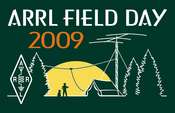It has been a cold, rainy Sunday. We are on short final for the delivery of child number two… about 12 more days. Spent part of the day finishing the fixes to the nursery. Despite the rain, I BBQ’d two excellent steaks for dinner. I spent a good amount of time at Fort Lewis, WA so BBQing in the rain is no big deal.
Yesterday I mounted a bike seat for my daughter (age 3) on the back of my underused Trek bicycle. The weather was pretty nice, sun and a little cool. I decided to take along my TH-D7A and mounted my Garmin eTrex on the handlebars… I was APRS bicycle mobile again (with a small passenger). I kept the power setting at EL (50mW) and had good luck getting digipeated by N7FTM, which is nearby. To get a little better coverage and maintain the low draw on the battery, I configured the home TM-D710A to digipeat only the packets from my TH-D7A. I hope the weather improves soon so I can do some more bicycle mobile testing. A speaker-mic would also be a great addition to the setup.
 I have been doing a little more reading on APRS (when I should be working on homework). One item that I found very intriguing was CQSRVR. There is a good run down of that feature here and Bob “Mr. APRS” Bruninga’s, WB4APR, recent article in QST. What amazes me is that the CQSRVR feature is not used more often. I have also had a great time playing with aprs.fi. I am a long time user of findu.com, but aprs.fi is just a wonderful tool to use in looking at APRS data.
I have been doing a little more reading on APRS (when I should be working on homework). One item that I found very intriguing was CQSRVR. There is a good run down of that feature here and Bob “Mr. APRS” Bruninga’s, WB4APR, recent article in QST. What amazes me is that the CQSRVR feature is not used more often. I have also had a great time playing with aprs.fi. I am a long time user of findu.com, but aprs.fi is just a wonderful tool to use in looking at APRS data.
 It is time to get ready for Field Day. The plan is to road trip out California and link up with my dad, KD6EUG, at his cabin in Mi-Wuk (near Sonora, up in the Sierra Nevada Mountains. We will be a 2A operation. My rig will consist of my resurrected ARSIB (Amateur Radio Station In a Box). The ARSIB is based around the FT-817ND. To give the FT-817ND a boost, I’ve paired it with a 100W Tokyo HyPower amplifier. The tuner remains the LDG Z-11 PRO. I would like to have both a rig control interface and control cable from the radio to the amp but the the FT-817 has only one ACC input. Enter the CAT MATE – I am hoping this will solve the ACC input limitation. For a logging program I think we will go with the N3FJP logging software. It offers the ability to have two (or more) seperate stations have a combined log. It also features a software-based voice and CW keyer, which may come in handy. The downside is it is a Windows only program and it does not have integrated PSK-31. This will require a manual work around to add PSK-31 QSOs. I need to get all the pieces and parts together and start testing everything out to make sure there are no surprises. We will be busy enough stringing antennas and I want to minimize any adjustments I need to make to my own equipment during actual operation.
It is time to get ready for Field Day. The plan is to road trip out California and link up with my dad, KD6EUG, at his cabin in Mi-Wuk (near Sonora, up in the Sierra Nevada Mountains. We will be a 2A operation. My rig will consist of my resurrected ARSIB (Amateur Radio Station In a Box). The ARSIB is based around the FT-817ND. To give the FT-817ND a boost, I’ve paired it with a 100W Tokyo HyPower amplifier. The tuner remains the LDG Z-11 PRO. I would like to have both a rig control interface and control cable from the radio to the amp but the the FT-817 has only one ACC input. Enter the CAT MATE – I am hoping this will solve the ACC input limitation. For a logging program I think we will go with the N3FJP logging software. It offers the ability to have two (or more) seperate stations have a combined log. It also features a software-based voice and CW keyer, which may come in handy. The downside is it is a Windows only program and it does not have integrated PSK-31. This will require a manual work around to add PSK-31 QSOs. I need to get all the pieces and parts together and start testing everything out to make sure there are no surprises. We will be busy enough stringing antennas and I want to minimize any adjustments I need to make to my own equipment during actual operation.






